Loons and other Nature Around the Lake

Update on the Loons
Prosper had an adventure the night of August 4th. A Loon Preservation Committee field crew came to the Lake to try to band the youngster. We have not had a chick color banded on Pleasant Lake since 2016 and it would be good to know where our Loons offspring are ending up. They tried for about 3 hours to catch him with no luck. The success rate of banding older chicks is around 10%. At least we know Prosper is a good diver and swimmer! Thanks to John Cooley and his crew for their efforts!!

Our young Loon is nearly done molting into its juvenile plumage.

Prosper is fully capable of diving and catching food. However, as usual for Loon chicks this age, Prosper continually begs for food from both parents, nudging them or poking at their necks.
I spent time out on the lake a few days ago with Dad while he was taking a bath – yes they live on the water and still take baths! Much splashing and flapping is involved. That helps dislodge things from the feathers. You might see a Loon splashing about frantically and think it is in trouble.

Watch a bit longer and you will likely see it bridle and then preen its feathers. All part of cleaning up after a long period of bringing food to a continually begging chick.

Being a windy day, we were both dealing with waves and I would like to think wave surfing is part of Loon R&R.
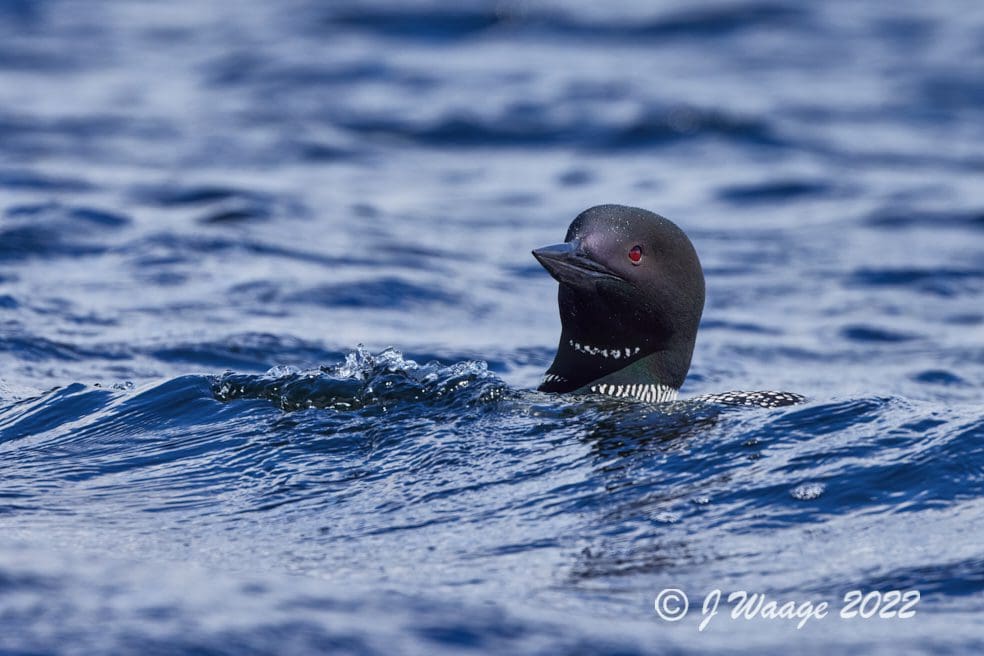

Hiding in Plain Sight
Monarch butterflies are well know. They are also among the most obvious butterflies around – with their orange and black markings. Isn’t that just making it easier for predators to see them? Actually they are avoiding being eaten by advertising that doing so would cause the eater trouble. Monarchs sequester some nasty chemicals from the milkweed that is their larval food plant.
Like many wasps and bees, the orange or yellow and black colors warn predators not to mess with them. Of course there has to be truth behind that warning. Most of us have had that demonstrated by a bee or wasp in our lives. A bird that tries to eat a Monarch will end up violently throwing up whatever it consumed, leaving it alive but wiser.
If you see a Monarch butterfly, look again because it might be another very similar species, the Viceroy. Below are top and side views of Monarch (left) and Viceroy (right) butterflies. Viceroys are smaller, but can you find the best way to tell them apart?
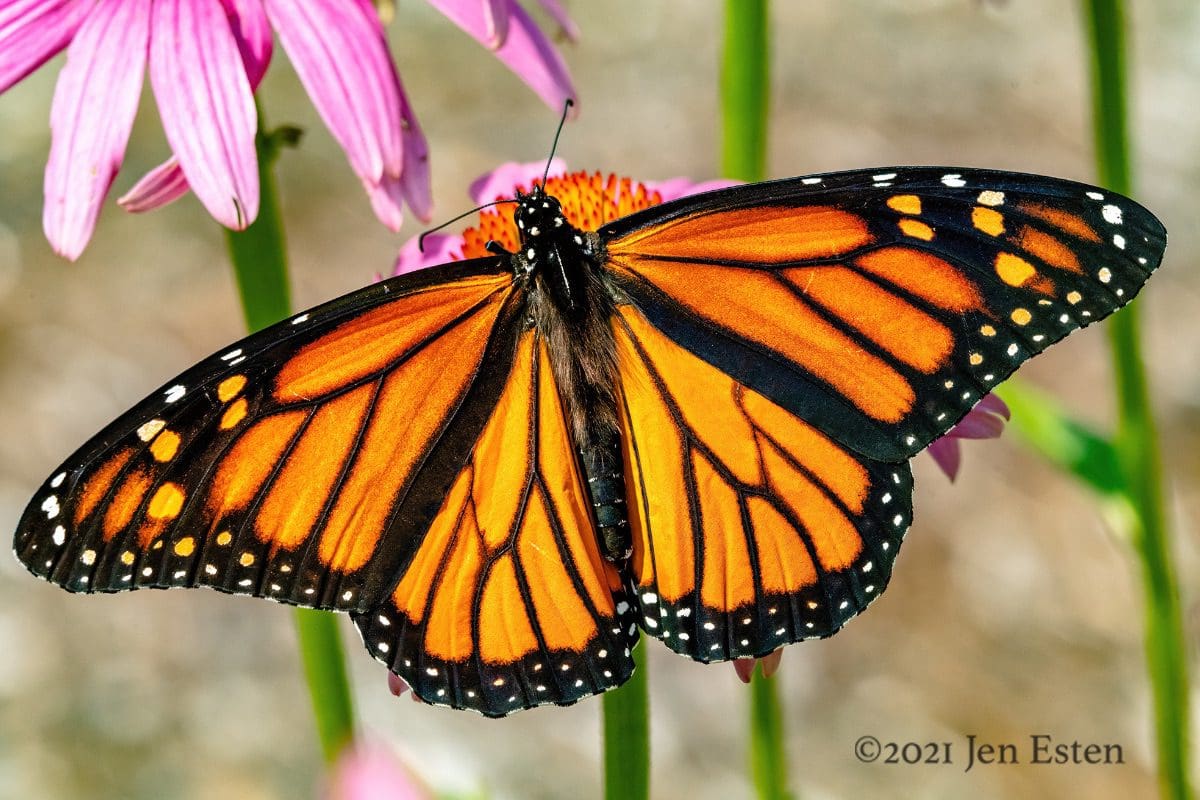

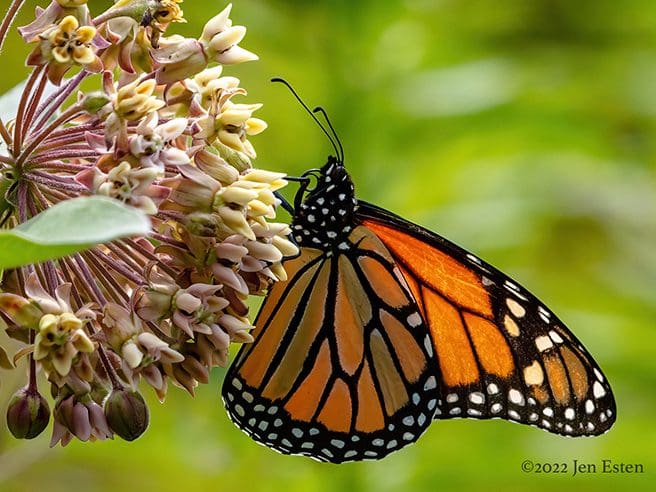

For many years it was assumed that the Viceroy mimics were tasty morsels whose mimicry of the Monarch was a false signal that it too is dangerous to eat. An edible species that gains protection by mimicking a dangerous species is a Batesian Mimic.
Only recently was the tasty morsel assumption tested. It turns out Viceroys sequester toxic compounds as well. Two or more species that mimic each other and are bad to eat or deal with are called Müllerian Mimics. When several “nasty” species in an area have similar warning coloration, they each gain a bit more protection from predators which have a bad experience with a similar species.
Have you spotted the way to tell Monarchs and Viceroys apart?
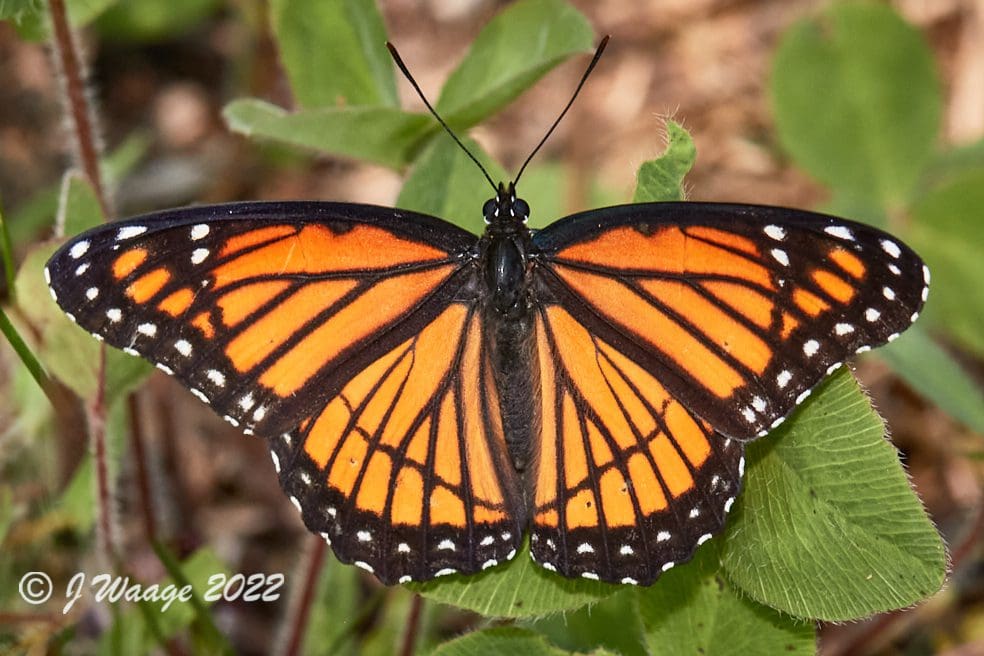
The thinner black curved line (‘smile’) on the hind wings of the Viceroy can be seen whether its wings are open or closed. It is the main distinguishing characteristic. You might think the striking resemblance of Monarchs and Viceroys means they are closely related. However, their remarkable similarity is even more amazing when you see who the Viceroy’s closest relatives actually are!
Below are two of the closest local relatives of the Viceroy: Red-spotted Purple (left) and White Admiral (right). These two species hybridize with each other and there is debate about whether they are actually one species with two morphs. The Red-spotted Purple, to make this more complicated, is a mimic of the distasteful Pipevine Swallowtail. Perhaps nowhere else has the paint brush of nature been as busy as in butterflies.
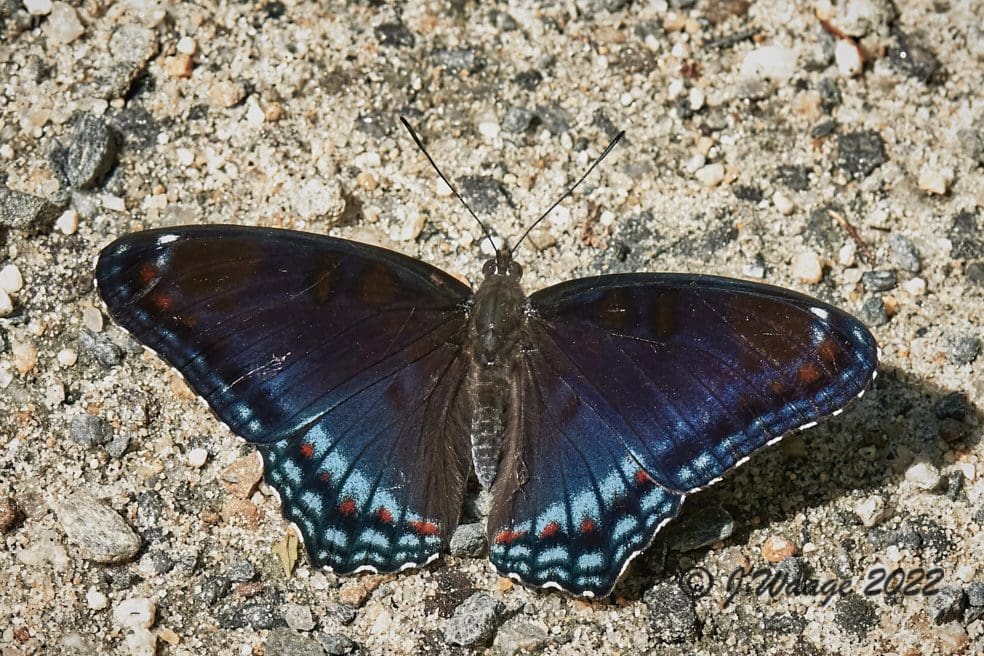


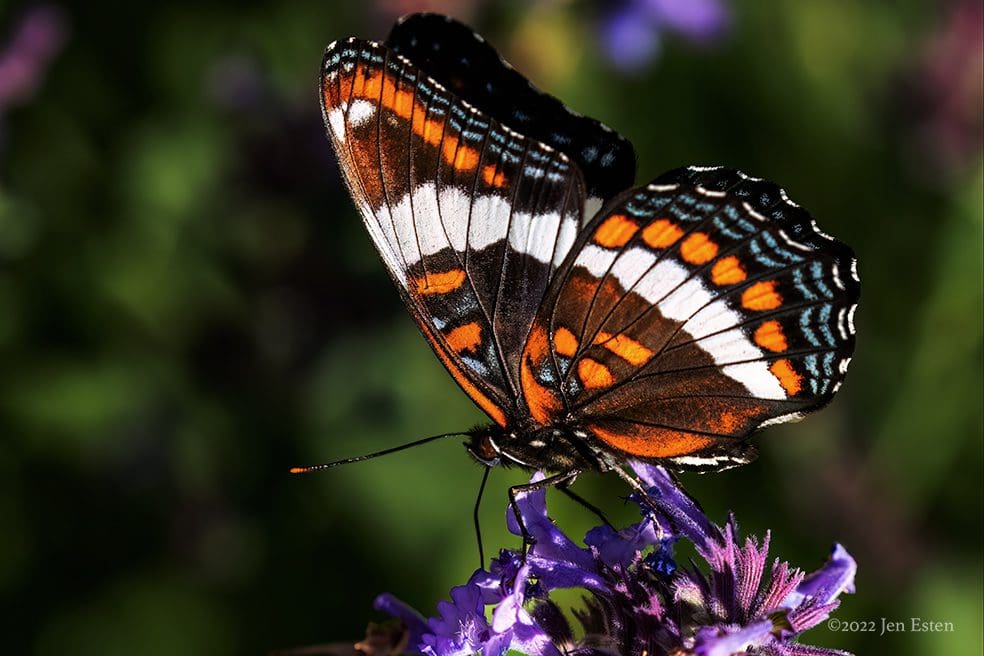
The insect world is full of mimicry examples involving yellow (or orange) and black stripes. Here is one you might encounter in your back yard. Though strikingly similar in coloration, only one of the two insects below is a wasp. Which one is the fly?

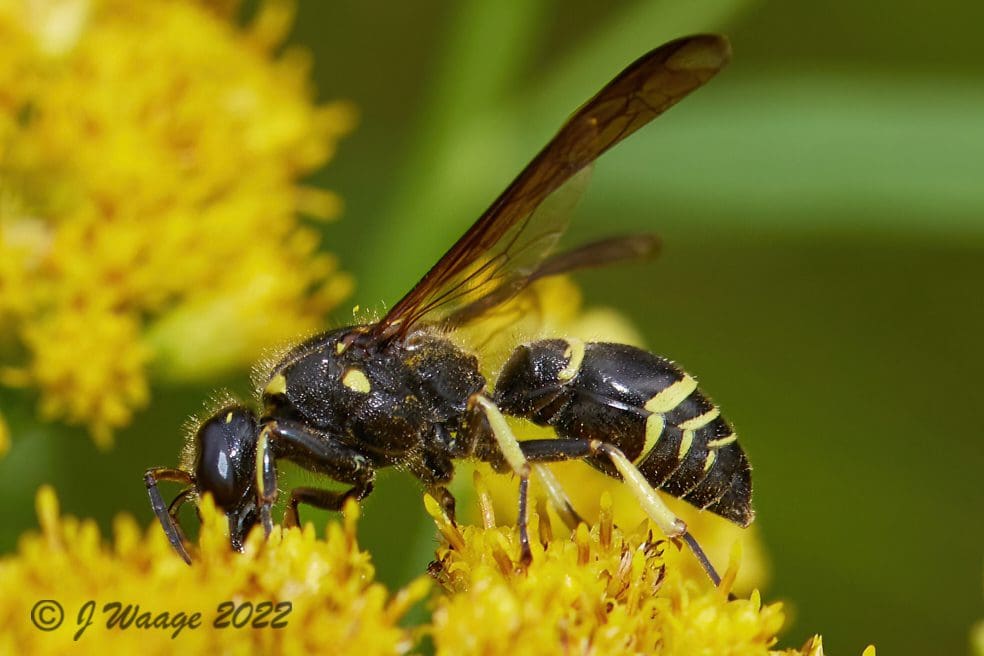
The aptly named the Eastern Hornet Fly – below (and top photo above) – has several features that reveal it is a fly. First, and most reliable, it has only two wings. Flies (Diptera), including mosquitoes, have two wings rather that the usual insect four. Wasps and bees often lock their front and smaller hind wings together making it seem at first glance as if they have only two wings.
Also, Fly antennae have only a few segments with the last pouch-like one having an attached bristle. Wasp (and bee) antennae have more and longer segments, often with a noticeable bend (elbow) after the first segment.
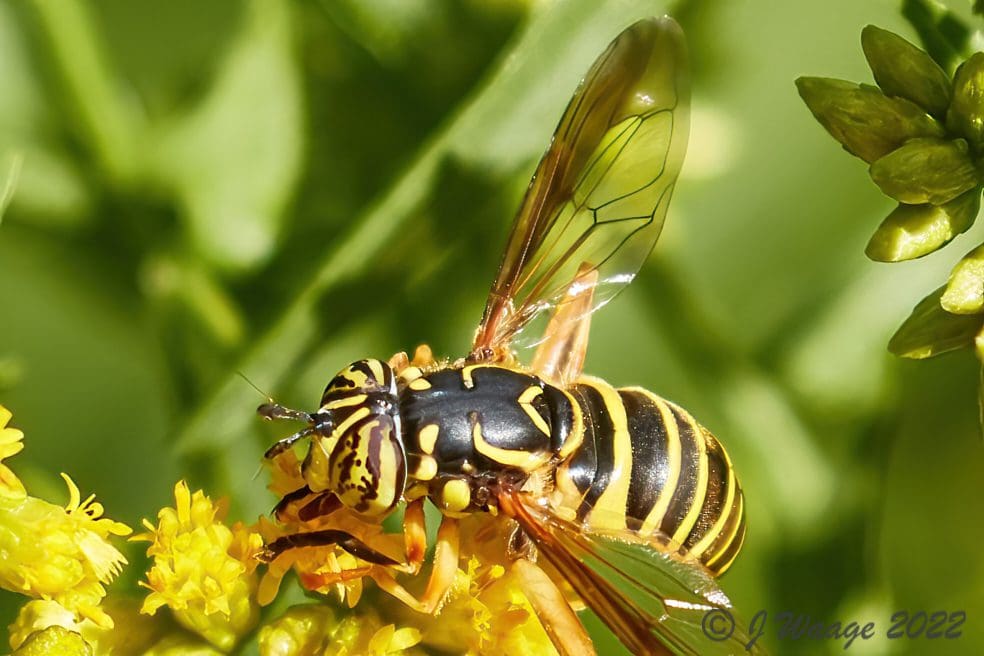
A final example of hiding in plain sight are insects that use camouflage to help them catch prey. The best examples are Praying Mantises (Google “mantis mimicry”), but around here my favorite is the Goldenrod Crab Spider sitting on a Coneflower below. It is actually hiding in two ways. First it can change color (over days to weeks) from yellow to white or almost green depending on background. Thus it blends in and escapes detection by predators.

Second, by blending in it may not be noticed it is too late by things it eats – like the small bee caught by the Crab Spider below. They catch their prey with large crab-like legs and have a powerful venom allowing them to subdue even fairly large prey.
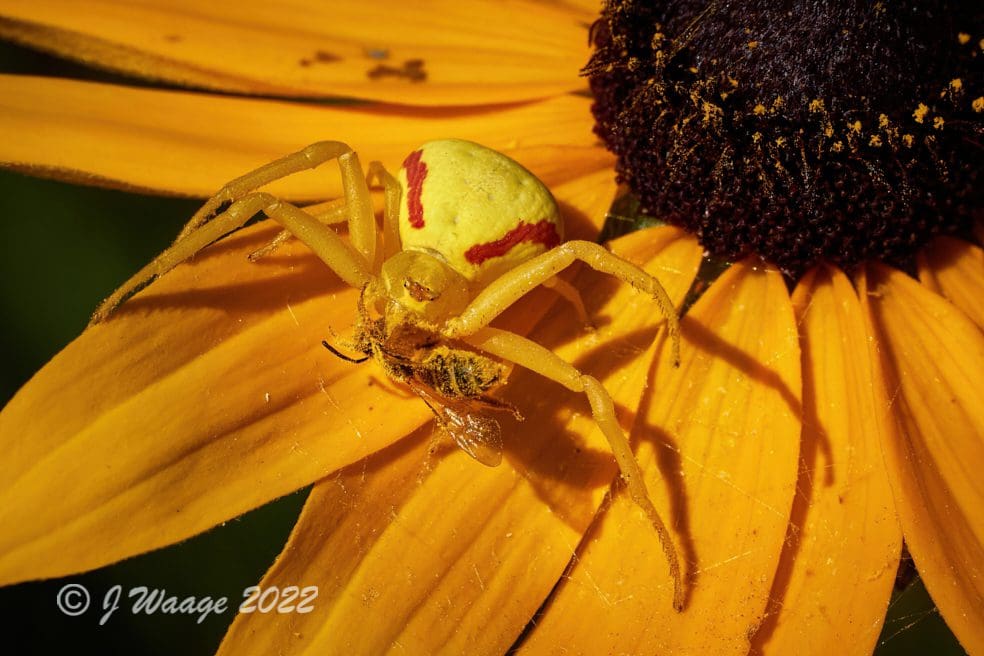
Leave Some Flowers
Your flowers are fading and turning brown and you are thinking of cutting them back. All of a sudden a flash of yellow and black reminds you that this is when the feathered seed eaters are around and would like you to wait or at least leave some for them.

Although most birds feed their chicks “flesh” (insects, fish, …), a lot of birds are seed specialists once they fledge. Seeds and berries this time of year are their way of bulking up for the winter or fueling up for migration. Both the adult (top) and juvenile (bottom) Goldfinches below are looking for ripe seeds.

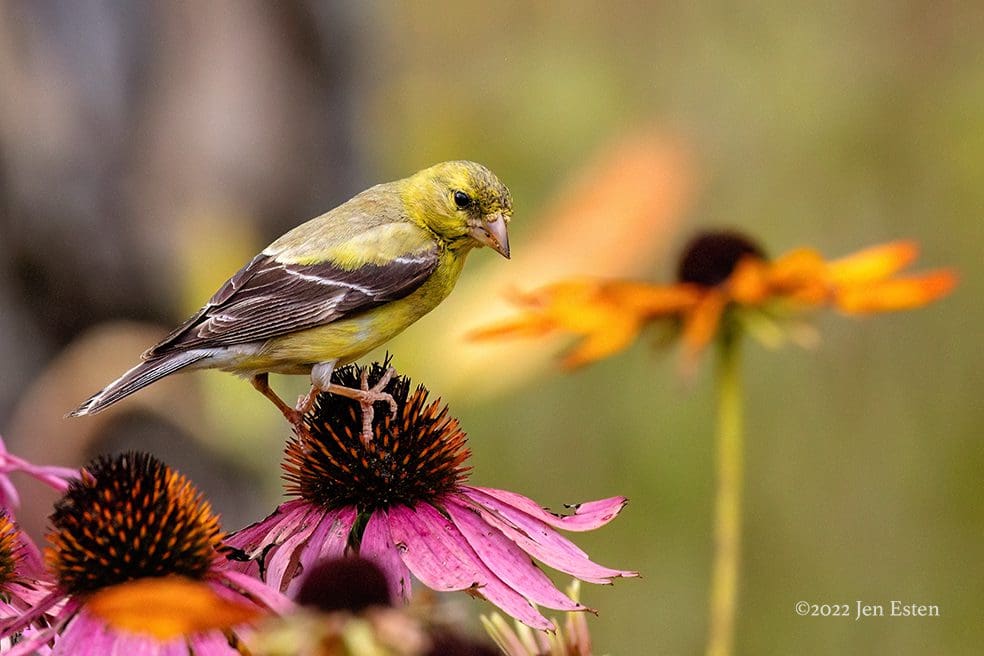
Goldfinches are also great fans of Thistle. They consume the seeds and, since many are late breeders, may use the white Thistle fibers to line their nests.
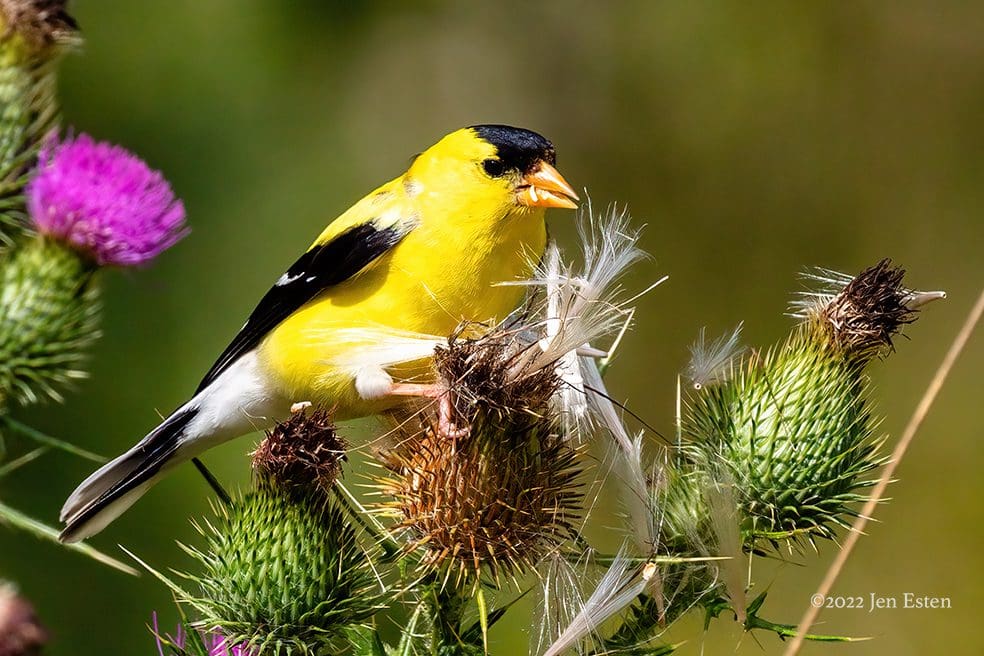
As we approach the fall, remember that a lot of our wild friends still need the milkweeds and other plants for growing and getting ready for winter. It takes several Monarch generations to get them from Mexico to here and many are just starting to lay eggs on the local milkweeds. They will need those leaves and flowers to feed on for a while yet.
Bye for now …

To be continued… Jon and Jen
Text and Photographs by Jen Esten and Jon Waage
